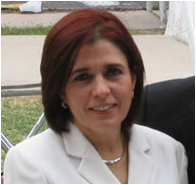Tuesday, April 30, 2013
Thursday, April 18, 2013
Nature vs Nurture
Go to this video and tell me what it says about nature vs nurture
It is called Why Some Apples Fall Far From the Tree.
http://bigthink.com/users/laurencesteinberg
It is called Why Some Apples Fall Far From the Tree.
http://bigthink.com/users/laurencesteinberg
Thursday, April 4, 2013
Unleashing Creativity/Language Teaching/learning
What's do you think creativity has to do with language teaching/learning?
“Most
people are born creative,” say Tom Kelley (University of California/Berkeley
and University of Tokyo) and David Kelley (Stanford University) in this
thoughtful Harvard Business Review
article. “As children, we revel in imaginary play, ask outlandish questions,
draw blobs and call them dinosaurs.” But as the years pass, formal education
takes its toll and many people no longer see themselves as creative.
Kelley and Kelley
believe creativity is vital to getting results, and they’re in the business of
helping people rediscover their creative confidence, defined as their “natural
ability to come up with new ideas and the courage to try them out.” They use
“guided mastery” to help people get past fears that inhibit creativity:
•
Fear of the messy unknown – One’s
office is cozy and predictable, say Kelley and Kelley: “Out in the world, it’s
more chaotic. You have to deal with unexpected findings, with uncertainty, and
with irrational people who say things you don’t want to hear. But that is where
you find insights – and creative breakthroughs.” Venturing out of one’s comfort
zone and treating it like an anthropological expedition is a sure way to fire
up creativity.
•
Fear of being judged – “If the
scribbling, singing, dancing kindergartner symbolizes unfettered creative
expression,” say Kelley and Kelley, “the awkward teenager represents the
opposite: someone who cares – deeply
– about what other people think. It takes only a few years to develop that fear
of judgment, but it stays with us throughout our adult lives, often
constraining our careers.” People self-censor ideas for fear they won’t be
acceptable to peers or superiors, constantly undermining the creative process.
Kelley and Kelley recommend keeping an idea notebook or whiteboard and
scribbling ideas – good, bad, indifferent – with abandon. It’s amazing how much
good stuff is written down by the end of each week. They also suggest scheduling
“white space” time when the only task is to think and daydream – perhaps while
taking a walk. It’s also important to reach an agreement with colleagues to use
more supportive language in response to wild and crazy ideas, shifting from
“That will never work” to “I wish…” or “This is just my opinion and I want to
help.”
•
Fear of the first step – “Creative
efforts are hardest at the beginning,” say Kelley and Kelley. “The writer faces
the blank page; the teacher, the start of school; businesspeople, the first day
of a new project… To overcome this inertia, good ideas are not enough. You need
to stop planning and just get started – and the best way to do that is to stop
focusing on the huge overall task and find a small piece you can tackle right
away.” A boy who procrastinated on a school report on birds till the night
before it was due was on the verge of a panic attack, but he got some great
advice from his father: “Bird by bird, buddy. Just take it bird by bird.”
•
Fear of losing control – Many people
think they have to solve problems or come up with answers by themselves. Kelley
and Kelley say that when we’re stuck, we need to let go and reach out for help.
“Confidence doesn’t simply mean believing your ideas are good,” they write. “It
means having the humility to let go of ideas that aren’t working and to accept
good ideas from other people.” Call a meeting of people who are fresh to the
topic and brainstorm. Let the most junior person in the room lead the meeting.
Look for opportunities to let go and leverage different perspectives.
Subscribe to:
Posts (Atom)
